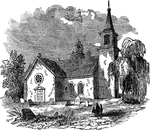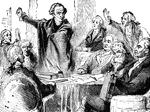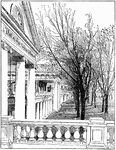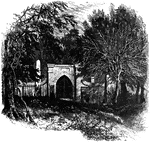The Places in Virginia ClipArt gallery offers 220 views of the commonwealth, particularly events of the Civil and Revolutionary Wars.
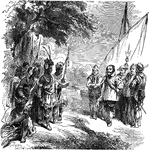
Smith's Meeting with Powhatan
The meeting between Capt. John Smith, founder of the Virginia colony, and Powhatan, the chief of the…

Battle of Spottsylvania
"The war in Virginia. Battle of Spottsylvania Courthouse- opening of the fight at Alsop's Farm, May…
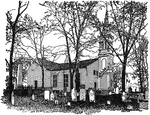
St. John's Church
"St. John's Church, Richmond, VA. Where the famous orator Patrick Henry made is great speech." -Gordy,…
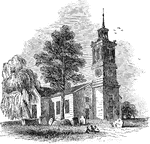
St. John's Church
St. John's Episcopal Church is the oldest church in Richmond, built in 1741 and giving its name to the…

Stafford's Store
"Going into camp at Stafford's store, Va. Third Brigade, Third Division, Sixth Corps, carrying off rails…

Fort Steadman
The Battle of Fort Steadman was one of the Confederacy's last attempts to besiege Petersburg, Virginia.…
Strasburg
"Reconnoissance of the Confederate poistion at Strasburg, VA., by a detachment of cavalry under General…

Zachary Taylor's Residence at Baton Rouge
Zachary Taylor (November 24, 1784 – July 9, 1850) was an American military leader and the twelfth…

Thoroughfare Gap
"Thoroughfare Gap, Va., a pass in the mountains on the Manassas Gap Railroad, near Strasburg, held by…

Tobacco Cultivation in Colonial Virginia
Tobacco being harvested in the Virginia Colony. By 1612, John Rolfe's new strains of tobacco had been…

Vermont Regiment
"Encampment of the First Vermont Regiment, Colonel Phelps, at Newport News, Va."— Frank Leslie, 1896
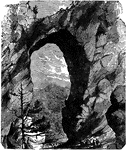
Natural Bridge in Virginia
" In Rockbridge County, Virginia, is to be found one of the greatest curiosities in the United States,…

War in Virginia
"The War in Virginia. Capture of three Confederate guns, near Culpepper, by General Custer's cavalry…

War in Virginia
"The war in Virginia- officers and men of Meade's army discovering unburied Federal dead on the old…
War in Virginia
"The war in Virginia. Battery on the left of the enemy's line, in front of Petersburg, captured by the…

War in Virginia
"The war in Virginia- Confederate signal station near Beverley Ford."— Frank Leslie, 1896

War in Virginia
"The war in Virginia. General Butler's lines south of the James, Va., with troops in position near the…

War in Virginia
"The war in Virginia--railroad bridge over the Rappahannock, at Rappahannock Station."— Frank Leslie,…
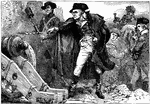
George Washington at Siege of Yorktown
An illustration of George Washington lighting a cannon at the siege of Yorktown.

Westover Plantation
Westover Plantation is located on the north bank of the James River in Charles City County, Virginia.…

Battle of White Oak Swamp Bridge
"Battle of White Oak Swamp Bridge, Monday June 30th, 1862- Ayres's, Mott's and Randall's batteries checking…

Battle of White Oak Swamp Bridge
"Battle of White Oak Swamp Bridge, Monday June 30th, 1862- Ayres's, Mott's and Randall's batteries checking…

Battle of White Oak Swamp Bridge
"Battle of White Oak Swamp Bridge, Monday June 30th, 1862- Ayres's, Mott's and Randall's batteries checking…
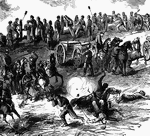
Battle of White Oak Swamp Bridge
"Battle of White Oak Swamp Bridge, Monday June 30th, 1862- Ayres's, Mott's and Randall's batteries checking…
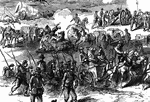
Battle of White Oak Swamp Bridge
"Battle of White Oak Swamp Bridge, Monday June 30th, 1862- Ayres's, Mott's and Randall's batteries checking…

Battle of the Wilderness
"The battle of the Wilderness, between General Grant and General Lee, May 5th and 6th, 1864. Our sketch…

William and Mary College (1723)
The College of William and Mary is a public university located in Williamsburg, Virginia, United States.…
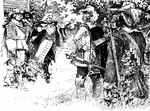
William Berkeley
William Berkeley, Governor of Virginia shouting "Shoot! Shoot! If you wish! I offer you a fair mark!"

Battle of Williamsburg
"Battle of Williamsburg, Va., on the peninsula between York and James Rivers, May 6th, 1862. General…

Winter Quarters
"Winter quarters on the Rappahannock- army huts of the One Hundred and Nineteenth Regiment, Pennsylvania…

The Yorktown Monument
Yorktown was the base of British General Charles Cornwallis during the 1781 siege, which was the last…

